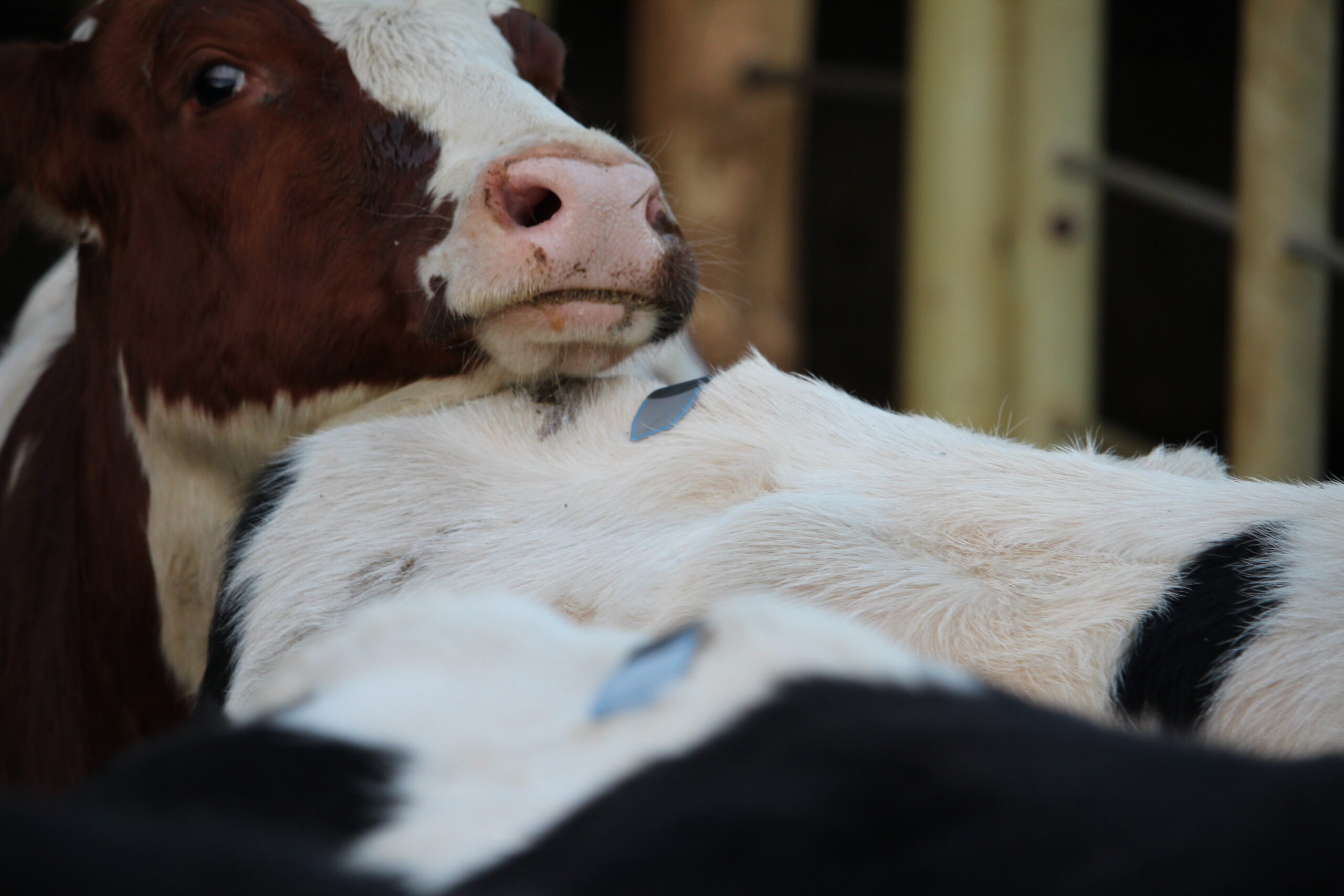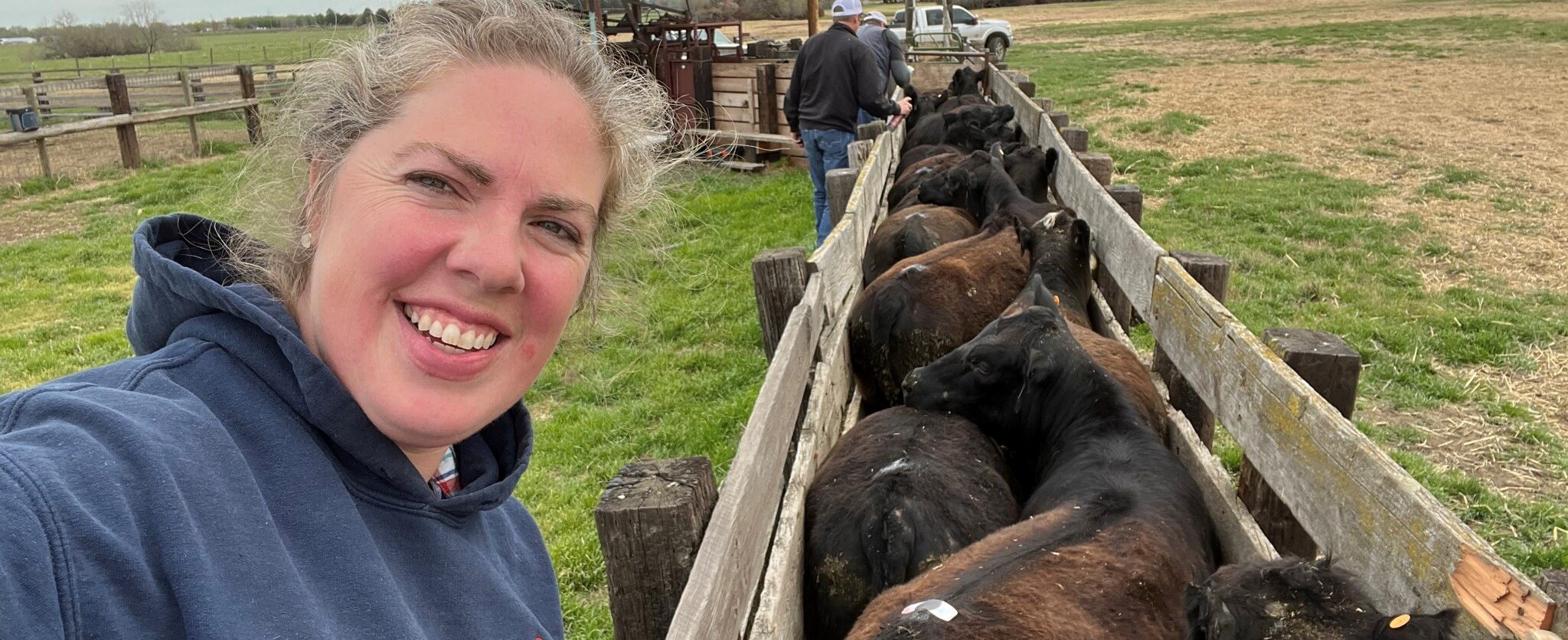Monitoring estrus intensity in cattle helps optimize reproduction and can be done efficiently with visual…
Podcast: Getting started in AI in commercial beef herds
The high cost of bulls, strong cattle prices and good seasonal conditions are driving an increase in the uptake of Artificial Insemination in commercial beef herds.
For those wondering how to get started with AI, artificial breeding company Vetoquinol has produced a useful podcast, featuring Dr Jo Connolly from Impact Veterinary Services.
Jo and Vetoquinol’s Rebecca Arnott cover the essentials of starting an AI program, from finding the right vet or AI technician, different protocols, storing and selecting semen, sourcing progesterone devices and repro hormones, the importance of nutrition, infrastructure needed and costs through to expected results and what to do after AI day.
Click here to access the podcast.
Set out below is a summary for consideration when getting started in AI, compiled by Repro 360.
While people could be forgiven for thinking the success of an AI program depends on the vet or technician doing the ‘arm work’ and the quality of semen used, there are many other significant factors at play.
A successful AI program is generally always the result of good management and good, or a rising plane of nutrition.
Preparation
Early planning is key and this means starting your preparations at least three, and ideally five months before the day of AI. Setting your herd and systems up for success includes many elements; but most importantly these include ensuring:
- cattle are on a rising plane of nutrition
- an experienced vet/technician is booked
- Suitable cattle are selected
- cattle have been vaccinated
- procuring the right semen
- animals aren’t pregnant (right up to AI day)
- a good synchronsation program; and
- your facilities are in good order.
Rising Plane of Nutrition
Ensuring cattle are on a rising plane of nutrition from at least three months before AI date is imperative and ideally this should be maintained both during AI itself and for approximately six weeks following AI day to maintain the conceptus through uterine implantation.
Animals in Body Condition Score (BCS) 3.5 at breeding and calving is optimal. As a rule of thumb, it takes approximately 70 days to lift animals one full body condition score; hence the importance of starting early and supplementing if pasture digestibility falls below 65%.
While producers will generally be trying to get females gaining weight prior to breeding; the opposite can occur in particularly good seasons. Females in BCS 4+ or cattle on pastures high in legumes or oestrogens may experience lower than expected conception rates.
Choosing a Cattle Vet or AI Technician
It is advisable where possible to use cattle vets or technicians that specialise in assisted breeding programs. Like most things in life, engaging reputable professionals with extensive experience generally pays dividends. A list of recommended cattle vets and AI technicians can be found here.
Female Selection
If you’re doing a commercial AI program for the first time, it is often best (and easiest) to start with joining your heifers only. Heifers should weigh 65% of their mature body weight at the start of the breeding program. They should contain the best genetics in your herd and have the added benefit of not having calves at foot causing them stress and the risk of being in a state of lactational anoestrous. The downside is that pregancy rates from a heifer program tend on average to be approximately 5% lower than that for cows.
To maximise the conception rate, choosing proven breeders on their second or subsequent lactions that have recovered from calving and are in good working condition is recommended. These cows will have a calf that is 40 days old and are in BCS 3.5.
Vaccinations
Producers who get consistently good AI results, ensure their cattle are fully vaccinated with annual boosters administered. It is strongly recommended that users vaccinate at least against leptospirosis and pestivirus. Lepto is carried by pigs and can be readily spread e.g. by pigs feeding from a cattle self-feeder or crop and unless you have a completely closed herd, the risk of pestivirus is real.
Vaccinating females to be AI’d with vibrio is also recommended given its current prevalance. Depending on your herd and location, it may be worthwhile also vaccinating againt botulism, bovine ephemeral fever and tick fever.
Semen
There are a number of Artificial Breeding and Herd Improvement companies which sell semen from many proven sires both domestically and internationally. Some in the north include Beef Breeding Services and Rocky Repro whilst in the south you’ll find Genetics Australia and ABS to name a few. Alternately semen can be collected from your own bulls on-farm or on-site with those companies listed above.
It is important to choose the right semen to help achieve your breeding objectives. When selecting AI sires it can be a game of risk versus reward. Sires selected should be a balanced mix of proven vs young sires to meet your breeding objectives. Whilst proven sires are a lower risk of not meeting your breeding objectives, younger unproven sires should be the sires of higher genetic merit which ultimately accelerate your rate of genetic gain.
And one cannot overstate the obvious – it needs to arrive on-time. There can often be delays with freight and logistics so always allow a good buffer.
Empty Females
Every vet and AI technician can recount endless stories of phatom bulls getting into the herd ahead of AI day and many an immaculate conception. If you are not 100% certain your heifers or cows are empty, pregnancy testing prior to the insertion of Cue-Mate® progesterone devices could easily pay dividends.
Protocols
There are many different protocols for AI programs with the more common ones outlined on the Repro360 website. These range from relatively simple to somewhat complex depending on the experience, resources and objectives of the producer.
Key variables include:
- different number of handlings (times through the yards)
- whether or not the herd is EU accredited
- Bos indicus vs Bos taurus
- cows vs heifers; and
- preference of the vet or technician.
Most commercial beef producers tend use a Fixed Time AI (FTAI) program. This entails syncronising all females to be AI’d so they can all be inseminated on the same day making it an efficient use of the vet or technicians time. We recommend however that you discuss the different options with the Repro360 team or your chosen vet or technician to work out which program is best for each application.
It is important to familiarise yourself with the program and make sure you have the date, time and treatment firmly in your calendar well in advance. The timing of the treatments is critical, especially in FTAI, in order achieve optimal results. Where heat detection is employed, this must be done thoroughly twice a day, with the aid of tools such as Estrotects, again to optimise the timing of insemination.
Drugs and Hormones
Drugs and hormones, being mostly prescription only products, will be dispensed by your vet for the program. It is important that these are shipped and stored correctly as per label recommendations i.e. refrigerated (2-8 degrees C) or room temperature (<25C) and generally out of direct sunlight. If not stored correctly these products do denature with no visible changes and can result in a disappointing outcome. During the program it is best to keep all hormones at the yards chilled in an esky with a cold brick and also a lid for UV safety.
While the vet dispenses the drugs, administration of these in the 7-10 days prior to insemination is usually done by the producer and farm staff. Hygiene and user safety with hormones is important. Maximising success of the program relies on clean insertion of devices, clean needles, deep muscle injection and minimising vial contamination. Inserting clean devices is paramount. Too often the AI technician is obliged to introduce valuable semen through a purulent vagina as a result of introducing contaminants ten days prior with the device.
Facilities
The front end of the yards requires a good race and safe vet crush for treatments and inseminating. A cover is ideal for not only to protect the semen against the sun, but also makes for a safer working environment for both people and livestock.
Make sure any repairs and maintenance are carried out before the program as delays and stress will prevent optimal results being achieved. Cows respond to quiet streamlined processing through the yards, therefore eliminating loud or noisy equipment (and people) is advisable during the program.
Holding yards should also be checked. All too often errant bulls will find their way in to a paddock of cycling cows. Feed and clean water should be provided to cattle to keep them in a positive energy state throughout the program.
Mistakes happen
Despite all good intentions and even a thorough understanding of a program, mishaps can and do occur. “The cows wouldn’t yard up in time; the wrong hormone was injected, we didn’t have enough devices; forgot about the next day injection; looked at the wrong day on the calendar; misread the program” – it happens, it’s human nature! Generally, all is not lost.
It is however critical to call your vet/technician as soon as you realise the mistake as often there is a solution. The longer you wait, the less time there is to find or act on a solution.
With the breeding season upon us, preparation, planning and attention to detail are paramount for success.
AI programs are a proven way to advance genetic gain and incorporate superior genetics into your herd, whether in a commercial or a seedstock business. An AI program can also be a cost effective way to breed mobs of cows to calve in set windows, bring uniformity to calving and to improve average weaning weights.
Producers who consistently achieve good results are those who are well prepared and whose cattle are in good health and condition.
Click here for a copy of the Repro360 AI Checklist
Source:
- Source: Beef Central
- Date: 2/28/2023
- Link: https://www.beefcentral.com/genetics/podcast-getting-started-in-ai-in-commercial-beef-herds/



